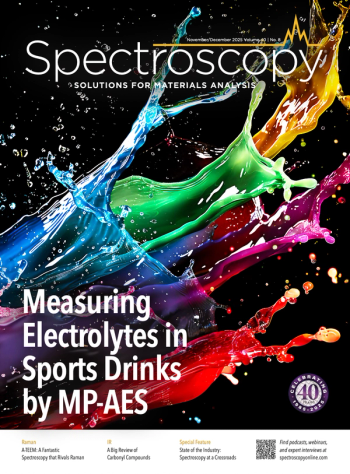
Isotopic Composition of Serum Zinc and Copper in Children with Autism
Scientists from the University of Calgary and the Mayo Clinic seeking ways to better understand metal processing in children with Autism.
There is a need to develop better tools to help understand metal processing in autism spectrum disorder (ASD). ASD is a developmental disability that disproportionately affects males and is caused by differences in the brain,
“It effects the ways individuals act, behave, and learn,” said Kerri A. Miller, research associate at University of Calgary, speaking at the Winter Conference on Plasma Spectrochemistry on Wednesday.
Miller and a team of researchers from the Mayo Clinic have been investigating the impact of isotopic composition of serum Zinc (Zn) and Copper (Cu) in young children with ASD (2). The team wanted to assess whether changes in metal processing in children with ASD are evidenced in the isotopic composition of bulk serum. The team found no correlation between concentration and delta values in girls.
Miller and her team collected the serum samples using a BD royal blue top clot activator vacutainer tube. The serum was left to clot, and then was centrifuged before being poured into a metal-free specimen vial and stored. The analysis of copper and zinc was conducted in an ISO 7 cleanroom.
The researchers found that as the Cu isotopic composition becomes more enriched in 65Cu, the Zn isotopic composition becomes more variable. This was independent of ASD status and sex, Miller said. There is a need for more research to better understand individual components of serum.
There are external factors that can impact isotopic composition. For example, environment, age, and diet can play a role. “What I think could play more of a role in children is diet,” she said. “Anyone who has small children know they can be incredibly picky.”
This study was one of the first in this space and more work still needs to be done, she said. The team found no significant differences in the isotopic compositions of bulk serum when comparing children with ASD and healthy children (2). However, Miller added, they did identify a potential age and sex-related dependency on the isotopic composition of Cu and Zn in serum in children.
References
- Signs and Symptoms of Autism Spectrum Disorders.
https://www.cdc.gov/ncbddd/autism/signs.html (accessed 2024-01-17). - Miller, K.; Day, P. L.; Behl, S. et al. Isotopic Composition of Serum Zinc and Copper in Healthy Children and Children with Autism Spectrum Disorder in North America. Front. in Mole. Neurosci. 2023, 16. DOI:
10.3389/fnmol.2023.1133218
Newsletter
Get essential updates on the latest spectroscopy technologies, regulatory standards, and best practices—subscribe today to Spectroscopy.



